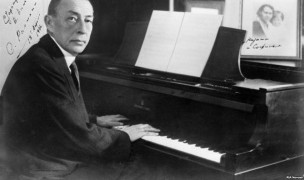 1 Terms
1 TermsHome > Terms > English, UK (UE) > Battle at Kahlenberg
Battle at Kahlenberg
The Battle of Kahlenberg on 12 September 1683 ended the second Turkish siege of Vienna. A German-Polish relief force under the command of the Polish King John III. Sobieski defeated the Turks. The defeat meant the beginning of the end of the Turkish hegemony. On 'Christian' side fought the combined infantry and artillery of the alliance of Austria, Saxony, Bavaria, Baden, and the Papal States, and the Polish cavalry. They faced the Ottoman army that besieged Vienna.
The battle started before all units were fully deployed. Early in the morning, at 4h, the Ottomans attacked, seeking to interfere with the deployment of the Holy League troops. Charles of Lorraine moved forward with the Imperial army on the left and the other Holy Roman Empire forces in the center.
At that time, above the "subterranean battlefield", a large battle was going on, as the Polish infantry launched a massive assault upon the Ottoman right flank. Instead of focusing on the battle with the relief army, the Ottomans continued their efforts to force their way into the city.
After twelve hours of fighting, the Poles held the high ground on the right. On the flanks, it is recorded that out of the forest the Polish cavalry slowly emerged and received a cheer from the onlooking infantry who had been anticipating their arrival. The Holy League cavalry waited on the hills, and watched the infantry battle for the whole day. At about 17h, the Polish King ordered the cavalry attack in four groups, one of the Holy Roman Empire and three Polish. Twenty thousand horsemen charged down the hills (the largest cavalry charge in history). Jan III Sobieski led the charge at the head of 3,000 Polish heavy lancers, the famed "Winged Hussars". The Lipka Tatars who fought on the Polish side wore a sprig of straw in their helmets to distinguish themselves from the Tatars fighting on the Ottoman side. The charge broke the lines of the Ottomans, who were tired from the long fight on two sides. In the confusion, the cavalry headed straight for the Ottoman camps, while the remaining Vienna garrison sallied out of its defenses and joined in the assault.
The Ottoman troops were tired and dispirited following the failure of both the sapping attempt and the brute force assault on the city. The arrival of the cavalry turned the tide of battle against them, sending them into retreat to the south and east. In less than three hours after the cavalry attack, the Christian forces had won the battle and saved Vienna.
After the battle, Sobieski paraphrased Julius Caesar's famous quote by saying "Venimus, Vidimus, Deus vincit" – "We came, We saw, God conquered.
The Turks lost at least 40,000 men dead and wounded in the fighting, plus at least 20,000 men captured and all cannons, compared to approximately 4,500 dead and wounded for the forces of the Holy League.
- Part of Speech: proper noun
- Synonym(s):
- Blossary:
- Industry/Domain: History
- Category: European history
- Company:
- Product:
- Acronym-Abbreviation:
Other Languages:
Member comments
Terms in the News
Featured Terms
phylum placozoa
Macroscopic, flattened marine animals, composed of ventral and dorsal epithelial layers enclosing ...
phylum cnidaria
Cnidarians. Hydras, hydroids, jellyfish, sea anemones, and corals. Free-swimming or sessile, with ...
share a term with millions
Share a term with millions of users around the world and increase your online visibility.Share a ...
oak
Genus native to the Northern Hemisphere with spirally arranged leaves, catkins for flowers and ...
Everest
The last but not least mount Everest. The Earth's highest mountain, with a peak at 8,848 metres ...
aglaonema
Genus of about 20 species of usually rhizomatous, evergreen perennials from tropical forest in Asia. ...
Robojelly
Robojelly is a hydrogen-powered robot desgined in the United States that moves through the water ...
Ferdinand Porsche
Ferdinand Porsche (3 September 1875 – 30 January 1951) was an Austrian-German automotive engineer ...
Marzieh Afkham
Marzieh Afkham, who is the country’s first foreign ministry spokeswoman, will head a mission in east ...
define1
Share a term with millions of users around the world and increase your online visibility.Share a ...
Contributor
Featured blossaries
Browers Terms By Category
- American culture(1308)
- Popular culture(211)
- General culture(150)
- People(80)
Culture(1749) Terms
- Manufactured fibers(1805)
- Fabric(212)
- Sewing(201)
- Fibers & stitching(53)
Textiles(2271) Terms
- Organic chemistry(2762)
- Toxicology(1415)
- General chemistry(1367)
- Inorganic chemistry(1014)
- Atmospheric chemistry(558)
- Analytical chemistry(530)
Chemistry(8305) Terms
- Railroad(457)
- Train parts(12)
- Trains(2)
Railways(471) Terms
- General seafood(50)
- Shellfish(1)






